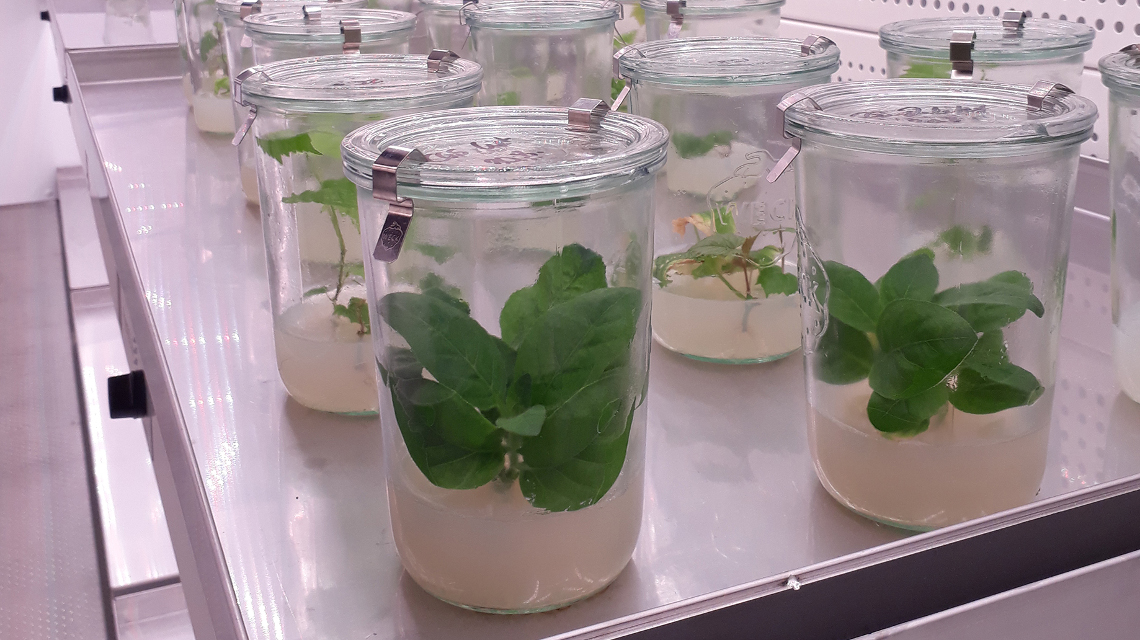Plants emit more greenhouse gas than presumed
Nitrous oxide emissions by plants are larger than previously thought. Though a natural process, it should be included in climate change models, say researchers from Heidelberg and Bingen.

Laughing gas, also known as nitrous oxide or N2O, damages the ozone layer and belongs to the so-called greenhouse gases. Six percent of man-made global warming is attributed to this gas. And most of the global N2O emissions are caused by livestock farming. However, an interdisciplinary research group from the University of Applied Sciences Bingen and the Heidelberg University now reports that plants also emit substantial amounts of this gas and therefore share a previously underestimated amount of the global nitrous oxide emissions. The results are published in the journal "New Phytologist".
Examining 34 plant species
The team studied 34 different plant species, including important arable crops such as tobacco and maize, and determined under controlled laboratory conditions how much nitrous oxide the plants emit to the air. “The N2O and CO2 ratio is correlated, so we were able to use the ample existing research on plant carbon dioxide emissions to calculate the amount of nitrous oxide released,” explains Katharina Lenhart, botany professor at the Bingen University and guest scientist in Heidelberg. The measurements were carried out in darkness so that the results would not be falsified by the CO2 removed from the air during photosynthesis.
By analyzing the isotope composition of nitrous oxide - the proportion of natural variants of the chemical elements involved - the researchers were also able to rule out the possibility that the gas originated from microorganisms or sources other than plants. Like a fingerprint, each source has its typical isotope pattern and can thus be distinguished.
Including plants in new climate change models
The results showed that each of the investigated plant species emits nitrous oxide. According to the researchers' estimates, five to ten percent of the natural nitrous oxide in the atmosphere is caused by plants. However, in contrast to man-made global warming, this is part of a natural process, as are the much larger N2O emissions from microbes. Nevertheless, the extent of this process must be known in order to adequately calculate the human contribution to nitrous oxide emissions and climate change. Until now, plants have not been considered as a source of nitrous oxide in current climate models.
Field studies to follow
“This study was just a first step toward quantifying plant emissions of nitrous oxide and understanding the related biochemical processes,” emphasises Lenhart. “To truly understand the role of plants in the nitrous oxide cycle and to quantify it more precisely, further studies on representative types of plants, especially trees, are needed.” For future studies the researchers are therefore planning to carry out field studies including other plant species and looking at the emissions as part of an entire ecosystem.
jmr


